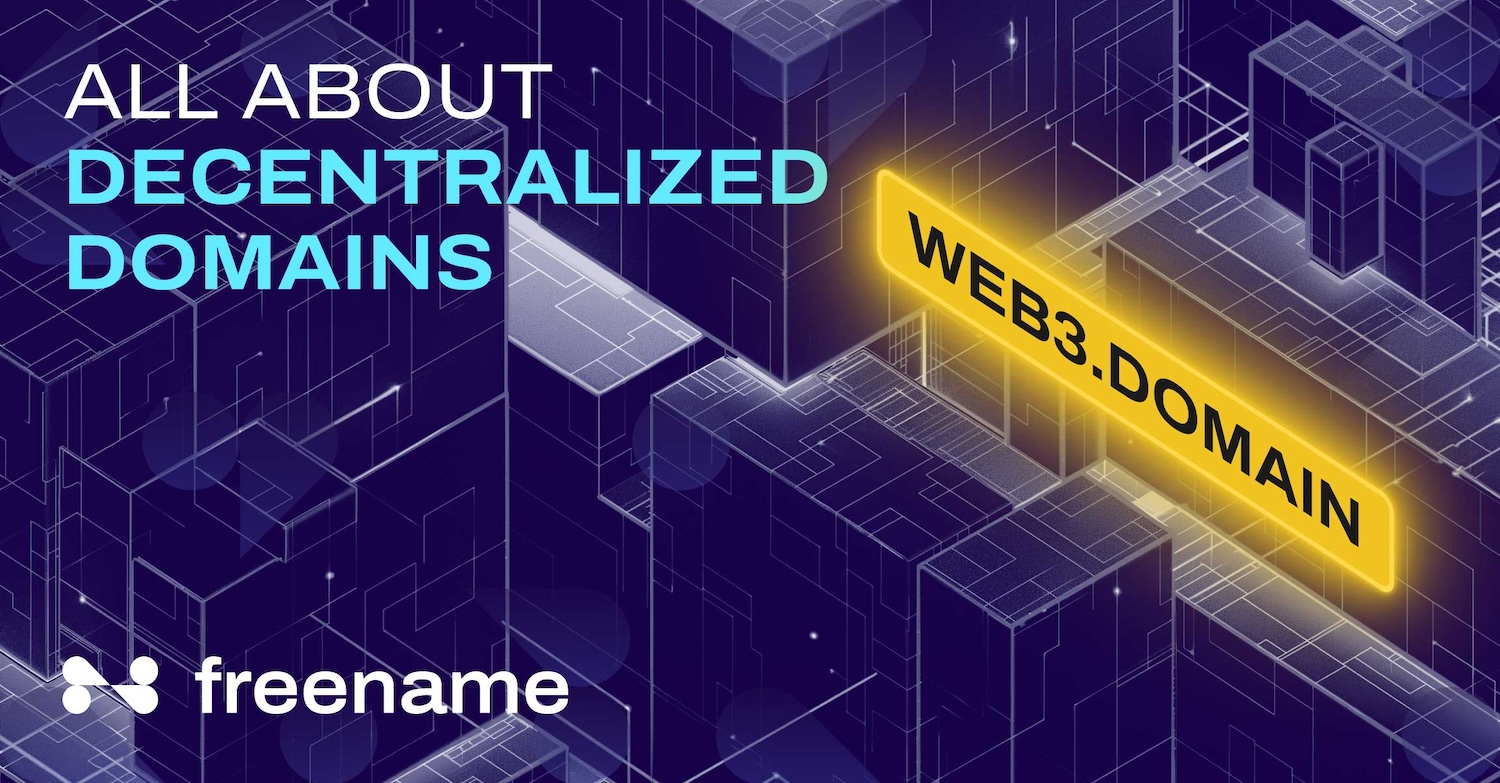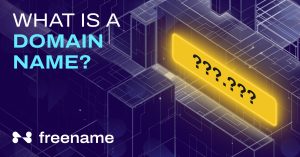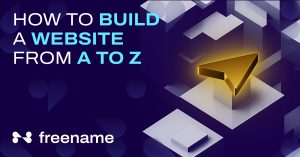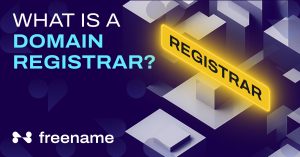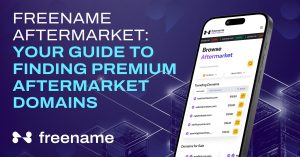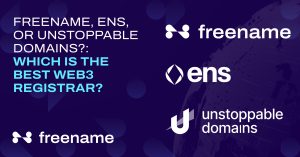Decentralized Websites: How Do They Work
Decentralized websites are online entities that are not governed by a central authority. They function independently, providing permanent ownership, complete control over the content, and uncompromised data privacy. These websites are built on decentralized domains powered by Blockchain technology, ensuring enhanced security and interoperability.
Arguably, decentralized websites are the need of the hour, addressing vulnerabilities in the existing web. Malware attacks, phishing, and data breaches are common cyber threats to traditional websites, forcing owners to spend hefty amounts on cybersecurity. Still, they have to continuously reassess potential threats and upgrade their security barriers.
The internet has evolved to become impregnable. Add attributes like interoperability, seamless user experience, and lightning-fast transaction speed, and you get an entirely new ecosystem known as the Web3 space. Now, you can imagine the capabilities of decentralized websites.
This post explores decentralized websites, their functions, and potential benefits for businesses and individuals. So, let’s get started!
How Decentralized Websites Work
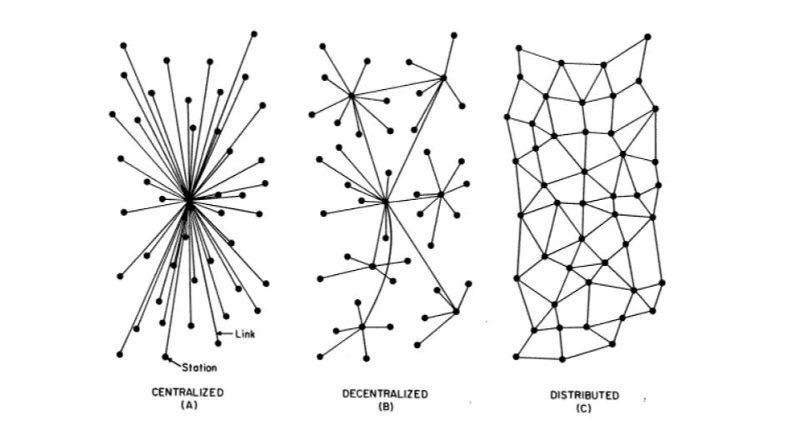
As mentioned earlier, decentralized websites are powered by blockchain technology. They are backed by an advanced mechanism that supports peer-to-peer networking with extended data controls. And finally, they feature distributed file systems and encryption mechanisms for enhanced privacy and data security.
The Role of Blockchain Technology
Blockchain technology supports and protects Web3 sites’ functions by providing an immutable ledger. The purpose is to record all transactions and changes on blocks instead of central servers.
Every block bears a unique cryptographic hash of the previous block. This ensures data integrity and transparency. Blockchain also liberates users to add extra layers for anonymity and enhanced security.
Peer-to-peer Networking Mechanism
Traditional websites rely on intermediaries to establish communication. For example, a Web2 site relies on central servers to verify online transactions. But Web3 sites work differently.
Instead of central servers, decentralized websites utilize nodes to communicate directly, thereby eliminating the need for intermediaries. A node can act as a client or a server while sharing information and resources.
Data is distributed across the blockchain network in the same manner. This decentralized infrastructure enhances redundancy, improves accessibility, and reduces single points of failure.
Distributed File Systems and Encryption
Website data is stored across multiple nodes using distributed file systems, such as InterPlanetary File System IPFS and Content-Addressable Network (CAN). This distribution mechanism prevents single points of failure and ensures resilience.
Furthermore, while the data is being transferred or stored, encryption ensures security and prevents unauthorized access or losses. Moreover, this approach replicates files across diverse network participants, ensuring decentralized control, immunity, and high availability.
Want to build your own decentralized website? Check out this tutorial.
Benefits of Decentralized Websites
Considering how decentralized websites work, they are secure, censorship-resilient, and, more importantly, save expenses incurred on intermediaries services. Let’s take a look at these benefits below:
Enhanced Security and Privacy
Owing to blockchain technology and its security protocols, decentralized websites address potential cyber threats, making you the rightful owner of your digital assets and content. Being the rightful owner, you can:
- Control your content without getting dictations from the central authority,
- Share the data anonymously with the right person without compromising your privacy,
- Determine conditions that should be fulfilled before transferring the data directly to the interested party.
Elimination of Middlemen
The decentralized infrastructure of Web3 enables blockchain users to communicate and transact without intermediaries, such as banks or third-party verification tools. With the help of blockchain technology:
- You can buy or sell products or services directly
- You don’t have to pay (or leave a percentage of payment) to third-party
No one can sell or otherwise distort your data without your explicit permission.
Resistant to Censorship
A decentralized website helps you create and publish content without the fear of bans. This is not the case with traditional websites that follow content guidelines. Failure to comply with any rules may result in monetary or regulatory penalties, including deactivation.
With your decentralized website, you can do a lot of things that may not be possible using a traditional website, such as:
- Publish an open-source code
- Showcase sensitive data, tokens, NFTs, etc.
- Launch an anti-government campaign
- Organize a top-secret Web3 meeting and much more.
Centralized Web vs. Decentralized Web
The above-mentioned benefits of Web3 raise many questions associated with the functioning of the centralized web, a.k.a Web2. Here’s a quick comparison between centralized and decentralized web:
| Centralized Web | Decentralized Web |
| Data is stored on central servers. | Data is stored across multiple nodes. |
| Data is controlled by authorities. | There is no single entity to control your data. |
| Security is vulnerable to cyberattacks and single points of failure. | Security is enhanced due to distributed architecture. |
| Data can be manipulated or compromised by the central authority. | Data is immutable and verifiable through the blockchain ledger. |
| Scalability is limited based on the central server’s capacity. | Scalability can be improved with the number of participating nodes. |
| User data is often monetized by providers. | Users enjoy better control over data. |
| Data accessibility is subject to server availability. | Data is more resilient and accessible. |
| Infrastructure and maintenance costs are high. | Cost is shared among network members. |
| Trust is based on the central authority. | Trust is based on the entire blockchain network. |
Overall Impact
The above comparison clearly shows that the decentralized web will replace the centralized web with time.
- Although the centralized web has better user interfaces, it doesn’t offer scalable solutions like Web3 does.
- Users have major concerns associated with data security, privacy, connectivity, and high costs, which Web2 platforms have yet to address.
- Web3 is continuously advancing. Blockchains, like Solana, have transformative potential. Their cost-effective solutions motivate users to create decentralized websites.
- The blockchain technology gains user trust, making it an ideal solution for businesses and individuals.
Economic Implications of Decentralized Websites
You must be aware of the monetization strategies traditional websites use. Some use traditional ads to generate funds, e.g., YouTube videos, while others rely on subscriptions. What if you don’t want to lend your website space to irrelevant ads?
Monetization Strategies
Web3 websites enable you to implement out-of-the-box monetization strategies to earn directly from interested users. You can introduce decentralized finance (DeFi) mechanisms, such as Tokenomics or NFTs, to generate website revenue from your visitors.
Data tokenization refers to converting sensitive information into tokens that can be used in online transactions.
For instance, patients’ personal information can be tokenized, protecting highly personal information such as name and identity. The health department can use these tokens for further research. Similarly, financial institutes can tokenize their customers’ financial records.
Impact on the Digital Economy
- Decentralized websites can help build a competitive environment, fostering innovation and competition.
- There will be equal earning opportunities for everyone – only the best sits at the top.
- Web3 websites democratize ownership and access, fostering economic inclusion and resilience.
- Web3 sites have a strong potential to alter market dynamics by redistributing digital wealth.
- Still, decentralized websites are associated with regulatory challenges and security issues. Addressing these is crucial for a sustainable positive impact.
Challenges and Solutions in Decentralized Web Development
Decentralized web users face multiple challenges in launching projects, executing smart contracts, and other online transactions, mostly associated with web development.
Overcoming Technical Barriers
Users may face technical challenges, such as:
- Complex coding
- Interoperability issues
- Security issues due to lack of awareness of the decentralized mechanisms
- Exploring and implementing robust security mechanisms
However, these issues will gradually decrease as more scalable and user-centric tools emerge down the line.
For now, users can overcome technical barriers by:
- Adopting standardized protocols
- Leveraging blockchain technologies
- Working with professional domain providers, such as Freename
- Implementing advanced cryptographic methods for robust security
Ensuring Scalability and Performance
The two major qualitative challenges for the decentralized web include:
- Ensuring scalability
- Maintaining smooth and consistent performance
Many blockchain users report slower transaction speeds and occasional network congestion. In response, users can enhance throughput by:
- Leveraging layer-2 scaling solutions (such as Sidechains or State Channels) on the Ethereum blockchain,
- Using database sharding techniques and
- Optimizing consensus algorithms
Future Prospects of Decentralized Websites
The future looks bright for decentralized websites. They are posed to revolutionize the internet by promoting content ownership, data privacy, and user autonomy.
Future predictions indicate that:
- Web3 adoption will increase exponentially as users learn the importance of decentralization.
- We may see Web3 regulations in place as many countries have shown positive intent toward regulating blockchain.
- Blockchain and DeFi integration will join the mainstream.
- The demand for control over personal data and transparency will increase.
- There will be a surge in decentralized social networks, content platforms, and marketplaces.
Web3 technology will continue to evolve, making way for potential innovations in different fields.
Potential innovations include:
- Advanced smart contracts,
- dApps with multi-chain operability,
- Enhanced security protocols
- High-capacity storage devices tailored for blockchains
- Domain mirroring for a hassle-free transition into the Web3 space
- User-centric identity verification,
- Enhanced tokenomics and DAOs
Freename’s Role in Promoting Decentralized Websites
To access your website, you need a decentralized domain name system (DNS), which is crucial for strengthening your website’s overall performance. A decentralized DNS has the ability to resolve domain names in your browser, hence a vital for all Web3 sites.
Your ability to access your decentralized website is dependent on multiple factors, such as the capacity of your decentralized DNS as well as the network volume. Naturally, a well-distributed network will give you access from multiple on-chain locations. This is where Freename DNS comes in.
Freename has a global network and supports multiple blockchains, such as BASE, Solana, Aurora, and others. This simply means that Freename DNS can resolve virtually any decentralized domain name in your Web3 browser, making it quick and simple.
With Freename DNS, you can interact with thousands of dApps on the chain and execute secure transactions worldwide. The well-distributed Freename network allows registered members to access their decentralized websites from any location without compromising their security and privacy. Thanks to a widespread blockchain network, they don’t have to rely on a single entity to oversee the domain name system.
Freename is committed to expanding the free and democratic internet, hence the world’s first Web3 namespace to be ICANN accredited registrar. It continues to make the user experience more seamless by helping them with user-centric solutions to switch to Web3 space.
For beginners and aspiring blockchain users, partnering with Freename can open doors to unlimited opportunities for success. So, don’t wait! Register with Freename and buy your Freename domain to build your decentralized website.

